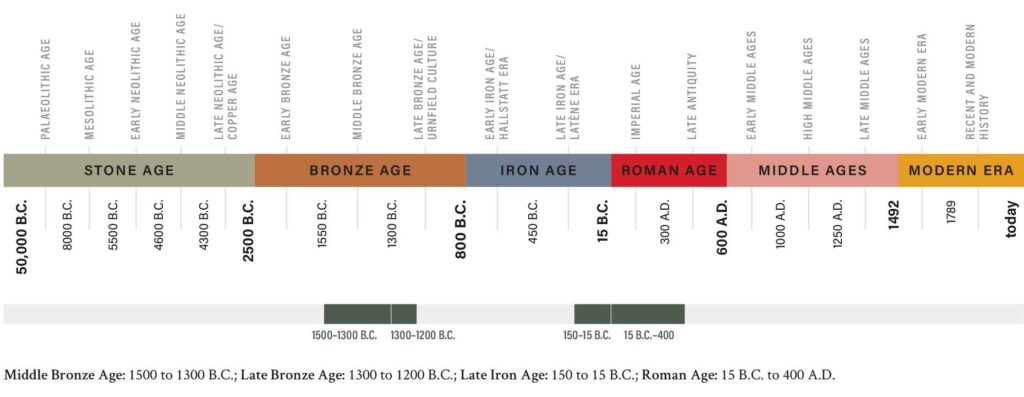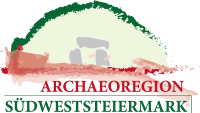
Retznei is located on the southern edge of Rosenberg hill, about 4 km south of Frauenberg hill and directly west of the Mur river. At this convenient location there was already a small village settlement in the Bronze Age and remains of several buildings from the Celtic era have also been discovered.
However, the site is mainly known for its Roman buildings – two richly equipped thermal baths and a building that may have been a sanctuary dedicated to the goddess Fortuna Augusta, judging from the dedication altar found there.
The village of Retznei is known mainly for its quarries and cement works. Fossils of fish teeth, sea cow ribs, sea urchins and crabs found there date back to about 15 million years ago. In addition to these geologically significant finds from times long before the appearance of humans, there is also a historically and archaeologically important site in Retznei, the importance of which has become increasingly clear.
When we started spading in April 2004, no one believed that the results would be significant. The site, owned by the Perlmooser Lafarge company, was mostly covered by a spruce forest, and only in the front area, near the road to Aflenz, was a meadow. In the first section, we immediately came across a massive mortar floor. This screed was exceptionally well preserved, and it was only 30 cm below the turf, so that we enthusiastically continued the work.
In the meantime, after several years of excavation, we can name most of the excavated rooms: For example, we know that at the beginning of the excavation, we uncovered the so-called Nymphaeum (a sanctuary). But at that time, everything was still unclear and we assumed that it was a Roman villa, namely the complex that the Graz archaeologist Friedrich Pichler had already written about in the 19th century, and which, after his short three-month excavation, was covered up again and forgotten.
After the first months of excavations we started to clear the forest and to extend our sections. And even after the laborious removal of the rootstocks, we only needed to remove the humus and came across 2000-year-old building rubble. In it we found countless fragments of wall paintings that had adorned almost all the rooms of the Roman estate, remains of marble wall paneling and decorations made of stucco. The layout of a luxurious bathing complex soon became apparent, and the findings showed the wealth of the inhabitants of that time. In this building we made one of the most beautiful finds: an ivory relief depicting a small Eros holding grapes in his hand, probably symbolizing the season of autumn.
After we had excavated this bath building, we examined its surroundings more closely. In the process, immediately to the northwest of the building, we came across more walls, floors, even the remains of a water pipe, and finally a room with a mosaic floor. Almost all rooms were equipped with underfloor heating and decorated with wall paintings. In the meantime we know that this building was also a bath – thus already the second thermal bath excavated by us.
We asked ourselves why there were two Roman baths in one place in Retznei. But instead of answering this questions, new questions arose. Because when we had the opportunity to dig deeper in some areas under the Roman floors, we came across remains of older buildings, still made of wood, dating back to the Celtic era. These were several so-called pit huts dug into the ground, but also at least one large building in post construction. Since the Celtic remains had already been destroyed in the Roman period, we cannot reconstruct their shape exactly today. What is clear is that there were several houses scattered in a relatively large area. Many findings from that time help us to classify them. Thus we found in old waste pits the remains of everyday life disposed of at that time, such as pots, bowls, but also bones and other food remains. Of particular interest to us, however, are the finds that were lost by the Celtic inhabitants. These include several bronze brooches and a decorated bronze belt hook. These pieces tell us that already the Celtic inhabitants of Retznei were relatively wealthy.
Text: Mag. Dr. Bernhard Schrettle

